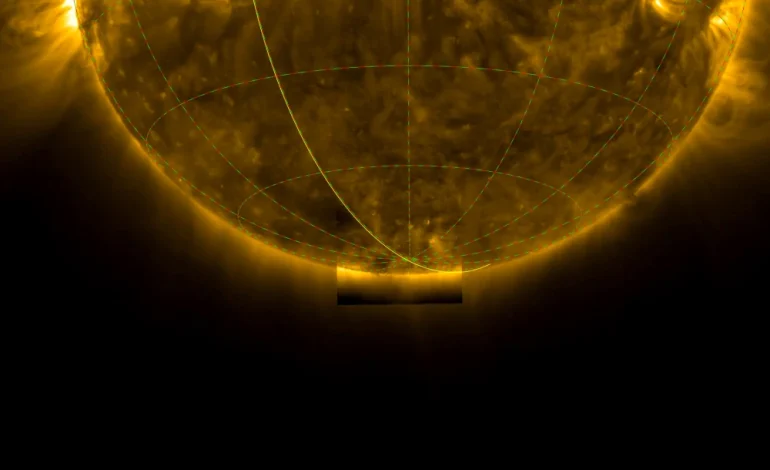In a historic milestone for space science, the European Space Agency (ESA) has released the first-ever clear images of the sun’s south pole, captured by its Solar Orbiter spacecraft.
This unprecedented glimpse into one of the least-explored regions of our nearest star is being hailed as a breakthrough in understanding solar behavior and its influence on space weather.
“These new unique views from our Solar Orbiter mission are the beginning of a new era of solar science,” said Carole Mundell, ESA’s director of science, in a statement on June 11.
Launched from Florida’s Cape Canaveral in February 2020, Solar Orbiter is a joint mission between ESA and NASA designed to study the sun more closely than ever before. While many spacecraft have observed the sun from around its equator—aligned with the ecliptic plane of planetary orbits—Solar Orbiter’s path was specifically designed to eventually tilt out of that plane to enable a unique view of the solar poles.
In March 2025, the spacecraft achieved a crucial milestone. With assistance from a gravity-assist maneuver near Venus, Solar Orbiter was able to tilt its orbit to 17 degrees below the solar equator. From this vantage point, the spacecraft captured the first detailed images of the sun’s south pole.
The images, taken during the sun’s current solar maximum—a peak in its 11-year activity cycle—offer new insights into magnetic turbulence and polarity at the sun’s southern extremity. ESA scientists noted that magnetic fields with both polarities are currently present, an expected but previously unobserved phenomenon as the sun transitions through its magnetic pole flip.
“This mix of magnetic fields is a rare and short-lived feature of the solar cycle,” said Sami Solanki, director at the Max Planck Institute for Solar System Research. “We’ve captured this from a unique and timely position.”
Understanding this magnetic flip process is critical. Shifts in solar magnetism influence solar flares, coronal mass ejections, and solar wind—all factors that affect satellite operations, communications systems, and power infrastructure on Earth.
Solar Orbiter is equipped with ten scientific instruments designed to study the sun’s outer atmosphere, magnetic field, and solar wind. The high-resolution images released previously in 2023 already set records for detail, but the new pole-focused visuals represent a deeper scientific value due to the location and timing.
“The sun is not only the source of life on Earth but also a potential disruptor of our modern technological systems,” Mundell noted. “It’s essential that we improve our ability to predict its behavior.”
This is only the beginning for Solar Orbiter’s polar mission. By July 2029, the spacecraft is expected to reach an orbital tilt of 33 degrees, allowing for even clearer and more comprehensive observations of both poles. ESA officials have confirmed that images of the sun’s north pole, already captured, are due to be released later this year.
“These data will transform our understanding of the sun’s magnetic field, the solar wind, and solar activity,” said Daniel Müller, ESA’s Solar Orbiter project scientist. “We are entering an era of unprecedented solar exploration.”










The latest news in your social feeds
Subscribe to our social media platforms to stay tuned